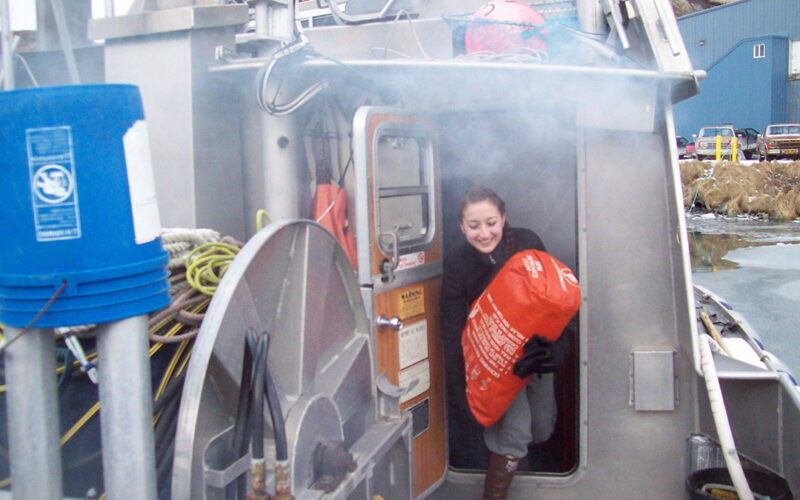
The U.S. Coast Guard has alerted ship operators of plans to “phase down” the use of FM-200, a fire suppressant common in extinguishers and overhead sprinkler systems that lets loose a gush of greenhouse gas emissions.
FM-200 is still allowed on vessels and there are no plans to prohibit it in the future, Pock Y. Utiskul, a fire protection engineer for the Coast Guard’s Office of Design and Engineering Standards, told Professional Mariner.
Rather, the Coast Guard wants the shipping industry to understand that the Environmental Protection Agency (EPA) is reducing the amount of FM-200, a hydrofluorocarbon also known as HFC-227ea, produced in and imported in the U.S. — meaning it will be harder to procure it in the future.
“At this point, there is no cutoff time,” Utiskul said. “There’s nothing that we carried out because of the environmental issue. But the message here is to let the public know that you’re not going to be able to find this readily in the market.”
The EPA plans to slowly diminish the production of all hydrofluorocarbons, a category of industrial chemicals used for cooling whose climate impact can be hundreds or thousands of times greater than that of carbon dioxide, according to the EPA.
The American Innovation and Manufacturing Act of 2020 grants the EPA the power to regulate the amounts of hydrofluorocarbons in the U.S. The EPA now gives allowances to companies to produce or import hydrofluorocarbons and will reduce these allowances over the next 13 years.
In 2023, the EPA is allowing for 90% of the 2020 levels of hydrofluorocarbons in the country, a measure that will be cut to 60% in 2024. By 2036, hydrofluorocarbon products in the U.S. will be reduced to 15% of what they were at peak. There is no plan to ban them, but they will stay at that low level thereafter.
This will essentially wipe hydrofluorocarbon products — including FM-200 — off the market, and the makers of heating and air conditioning equipment, refrigerators and fire suppression systems will need to find alternatives.
FM-200 is often used on ships, Caitlyn Stewart, vice president of regulatory affairs for the American Waterways Operators, an industry group for tugboat and barge operators, told Professional Mariner. There are no exact figures, but “it’s probably the most pervasive” fire suppressant, said Stewart.
The phasedown was not unexpected, she said. Switching fire suppressants often comes up in proposals for limiting the carbon footprint of the shipping industry, and the announcement of the phasedown brings some clarification, but the lack of an exact timetable is somewhat frustrating, she added.
“I think that, since the announcement, we haven’t really gotten a lot of clarity about what exactly this stepwise reduction is going to look like,” she said. “So that leaves operators not quite sure when this is likely to become critical.”
There are many alternatives to FM-200. Some recommended by the Coast Guard include carbon dioxide, inert gas, Firetrace International’s trademarked Novec 1230 Fire Protection Fluid and an old standby: water.
Which alternative is best can vary by ship, so the Coast Guard cannot predict exactly how cumbersome or expensive the switchover might be.
In a safety bulletin, the Coast Guard warned these alternatives might not be “one-to-one” replacements. Fire systems may need to use more of the alternative material than they did FM-200. Retrofitting and full replacements could be required and would need to be reviewed by a Coast Guard office.
However, Utiskul said the Coast Guard is working to make the transition as easy as possible and may have some insights to share later, including a possible recommendation for a replacement that can just be slipped in most systems and equipment where FM-200 had been used.
“Can you replace [FM-200] one-to-one without doing retrofitting? Internally, the Coast Guard is working on it and working with the industry to confirm what would be the easiest solution,”
he said. “But to understand what, in layman’s terms, is the best option, it’s kind of hard because there’s so many available options.” •

